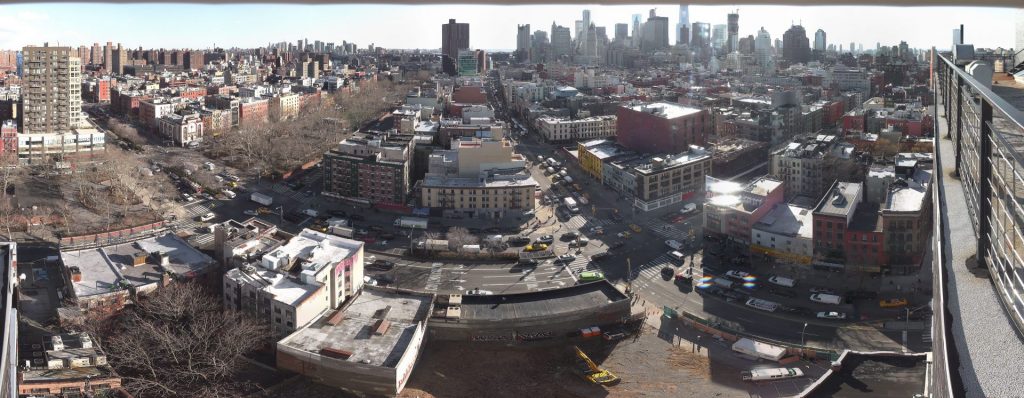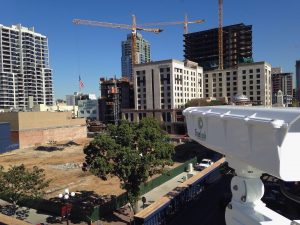
Although primarily found providing construction jobsite monitoring, construction cameras can also be found in use in manufacturing facilities or at sporting events, trade shows, and even resorts. With capabilities for live streaming and time-lapse photography, the cameras have the potential to be valuable logistical and promotional tools for businesses.
Recently, TrueLook, a U.S. provider of live webcam systems, teamed with a Canadian production company to document a 150-day cultural and scientific expedition meant to celebrate Canada’s 150th anniversary of its confederation.
TrueLook placed a 5-megapixel fixed-position camera aboard the MV Polar Prince as it sailed more than 12,000 nautical miles from Toronto, Ontario, to Victoria, British Columbia. Build Films, a Winnipeg, MB-based production company, is creating a documentary about the five-month-long Canada C3 expedition
“We wanted to capture this historic journey as the Canada C3 connected our nation and her citizens,” said Carlyle Paetkau, one of the founders of Build Films.
The entire voyage, which took the ship through the Northwest Passage, a legendary sea route that has obsessed explorers for centuries, is documented in an eight-minute time-lapse video created through the camera.
The state-of-the-art camera didn’t just capture images. It provided a live feed from the ship to allow people to watch the voyage online. Designed to be rugged and reliable, the construction camera proved to be able to withstand the harsh conditions of a sea journey through Arctic waterways.
 Uses of construction cameras
Uses of construction camerasDespite being primarily designed for jobsite monitoring for the construction industry, users continue to explore unique applications for this camera technology. The only limit for the use of live and time-lapse video and pan tilt zoom (PTZ) cameras is the imagination of the user.
The best construction cameras are versatile and easy to install, mount, and use. The project management applications of the cameras can benefit industrial and manufacturing uses. Companies are also increasingly using live streaming and time-lapse photography to promote their businesses — including vacation resorts, casinos, tradeshow venues and sporting events.
In a construction setting, the cameras don’t have to be limited to simply monitoring the outdoor setting. They can provide a useful tool for construction supervisors once interior work begins and crews are out of sight.
Instead of using time-consuming walkthroughs to keep track of the workflow, project managers can remotely monitor interior construction on multiple jobsites with indoor construction cameras. This pays immediate dividends in discovering production problems in real-time and improving safety and security.
In a manufacturing setting, time-lapse footage can reveal potential workflow issues, helping troubleshoot problems early in the process and streamline production. Video footage and high-res photos can easily document processes and procedures to ensure consistency. Encryption protects the camera feeds from interception in order to protect proprietary information.
You can’t manufacture a product without the proper components. If your company relies on deliveries to keep production flowing, construction cameras can be used to keep track of deliveries being made to the facility, ensuring documentation of any mishaps or improper handling.
Construction cameras can aid supply chain optimization. Remotely monitoring the workplace means being able to keep an eye on the availability of critical components, raw materials, and tools. Documenting the coming and going of workers can help managers streamline procedures. Perhaps the footage might reveal that moving a supply of components 10 feet closer to the line could shave valuable seconds off the process by letting employees work smarter, not harder.
Workplace accidents can mean big penalties. If safety standards are violated, a business risks a maximum OSHA penalty of $126,749 per willful or repeat violation. By visually tracking potential safety problems, they can be corrected before anyone is injured. Documenting violations when they do occur gives managers a means to develop safety procedures to prevent similar problems from occurring again.
Whatever the industry, recruiting skilled workers can be a challenge in an economy approaching full employment. With a potentially smaller pool of workers, supervisors must find ways to get the greatest results from the least effort. Construction cameras can allow managers to track the workflow of smaller crews in multiple remote locations in real-time.
Supervisors can use time-lapse videos or marked-up photos of problems or worker performance as feedback for tweaking workflow or improving processes.
Construction cameras have been successfully used by companies in industries ranging from aerospace to energy production. When dealing with clients that can span the globe, manufacturers can be faced with challenge of communicating across thousands of miles and time zones.
Allowing customers to view the characteristics of products and components can prove challenging and expensive. Shipping components to customers to inspect in person means increased costs. Construction cameras can allow customers to view the components closely and in high-resolution without spending money on travel or shipping.
 Reducing travel
Reducing travelThe cameras can be used to increased communication and promote collaboration across far-flung facilities and department. Progress reviews and inspections can be conducted online instead of in person. Companies can save thousands of dollars in travel expenses over the first few months of service alone. For instance, if a team of five engineers would normally have to fly across the country or to another continent to inspect a facility in person, they could do so remotely with the aid of live streaming.
In the case of problems that occur on remote sites, instead of have to delay a project and travel to a site, a technician can access a live camera, locate the problem, and provide solutions immediately.
Not all construction cameras perform equally. Before investing in remote monitoring technology to use in an industrial or manufacturing setting, carefully evaluate the capabilities of the camera. For maximum usefulness, look for features including time-lapse video functionality, recording, and web-enabled remote control. High data speeds are another consideration as well and security features including encryption.
 Ken Pittman is the Chief Marketing Officer for Winston-Salem, NC-based TrueLook, which provides construction cameras that combine live jobsite viewing, project time-lapsing, and HD security. TrueLook has been serving the construction industry for more than 20 years.
Ken Pittman is the Chief Marketing Officer for Winston-Salem, NC-based TrueLook, which provides construction cameras that combine live jobsite viewing, project time-lapsing, and HD security. TrueLook has been serving the construction industry for more than 20 years.
Scott Ellyson, CEO of East West Manufacturing, brings decades of global manufacturing and supply chain leadership to the conversation. In this episode, he shares practical insights on scaling operations, navigating complexity, and building resilient manufacturing networks in an increasingly connected world.